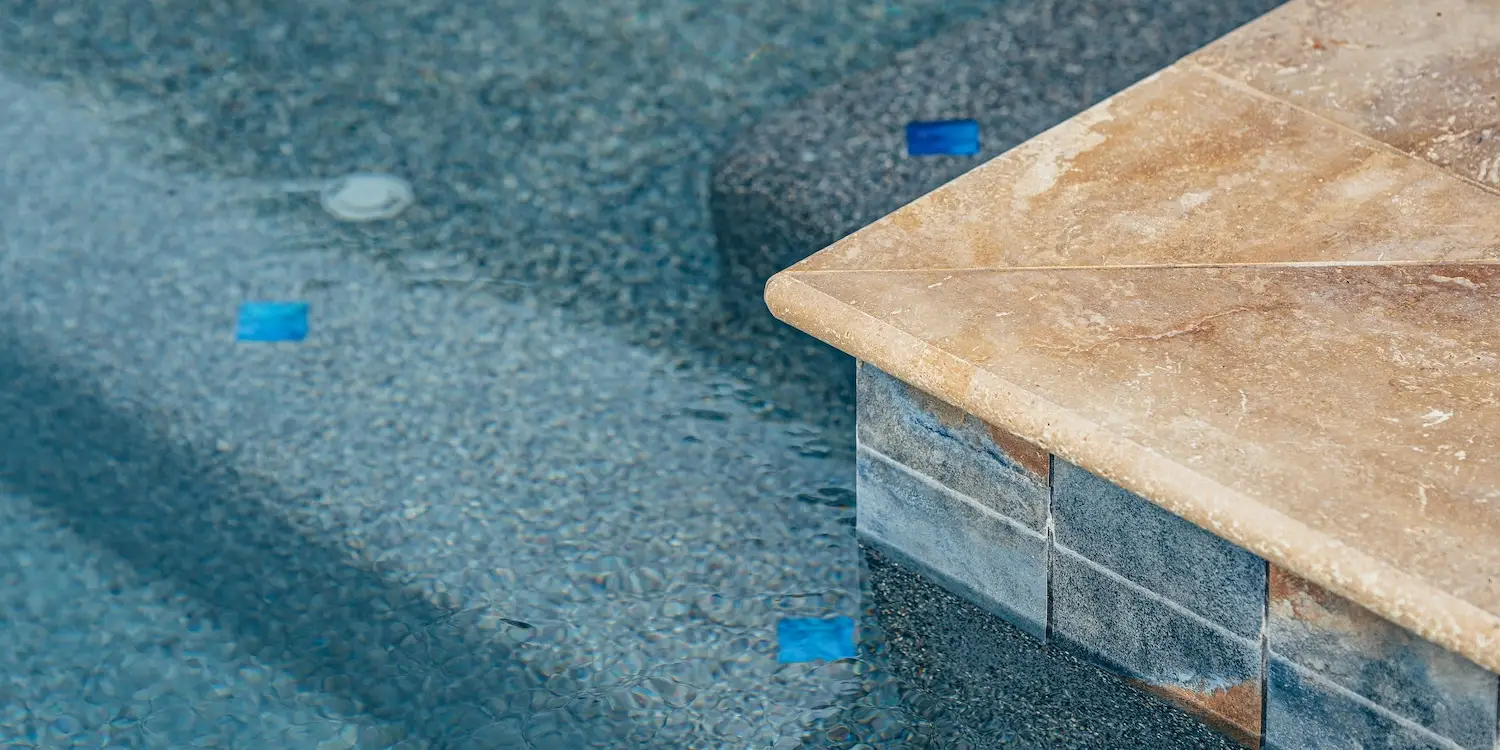There are many elements to a pool plumbing system that work together to keep your swimming pool functioning properly. If you are interested in installing a pool in your backyard, it is helpful to have some knowledge about how each part works together. Educating yourself about every aspect, including those you don’t see, can help you better maintain your pool and save you money on repairs. Follow this guide to learn more about the components of pool plumbing.
Pool Plumbing Components
Every pool has seven main parts, broken up into these three sections:
1. Suction
The suction side of a pool sucks in water and introduces it to the filtration system, beginning the circulation process. It contains the skimmer, main drain, and suction lines.
Skimmer
Skimmers are plastic buckets built into the side of the pool. These devices house baskets that catch debris too large to go through the filter, such as leaves, twigs, and bugs. Some models have a door called a weir that pushes inward when water passes through it, while others stay shut to keep debris from getting into the pipes. For greater suction power, install more than one skimmer.
Main Drain
Despite its name, the main drain functions much like a skimmer. It is a large circular or rectangular piece on the bottom of the deep end of a pool that connects directly to the pump or skimmer. This component allows for better circulation and alternative water flow if the skimmer is blocked. To reduce the suction force and increase safety, install two main drains.
Suction Lines
Once the pool water has passed through the skimmer basket, it enters the suction line. These pipes are typically made of polyvinyl chloride (PVC) and carry the pool water from the skimmer to the pump.
2. Filtration
The filtration system does the dirty work of removing contaminants from pool water before circulating it back into the pool through the skimmer and main drain. It consists of two items: the pool pump and the pool filter.
Pump
The pump is the main structure in a pool’s circulation system. It pulls water into its internal chambers, then pushes it out to the filter. These chambers create pressure through a rotating part that forces water through the hoses with high velocity. The size of the pump you need depends on the size of your pool. The larger your pool is, the more horsepower the pump will need to move the higher volume of water.
Filter
After the pool water is pulled into the skimmer or main drain, it is pushed to the filter for cleaning. Water then exits the filter clean and free of microscopic contaminants. Pool filters are available in three varieties: cartridge, sand, and diatomaceous earth. Depending on the type you have, your filter can remove everything from bacteria to larger debris.
3. Pressure
The pressure side of a pool pushes the water out of the filtration system back into the pool to complete the circulation process. The return lines and return jets compose this section of the swimming pool plumbing system.
Return Lines
Now that the water is filtered, it can go back into the pool. Also made of PVC, the return lines are the opposite of suction lines, carrying water from the filter to the return jets.
Return Jets
After passing through the return lines, the filtered water arrives at the return jets. As the name suggests, this component returns the water to the pool. It typically has adjustable flow rates and the direction of the output.
Professional Pool Plumbing Installation
Installing plumbing is just one of the many steps to building a swimming pool and spa. At Pools By Design, our team works with you throughout the design and construction process to create a beautiful and functional final result. Let us help you turn your backyard into your new vacation destination.
Contact us today to start the pool building process.


